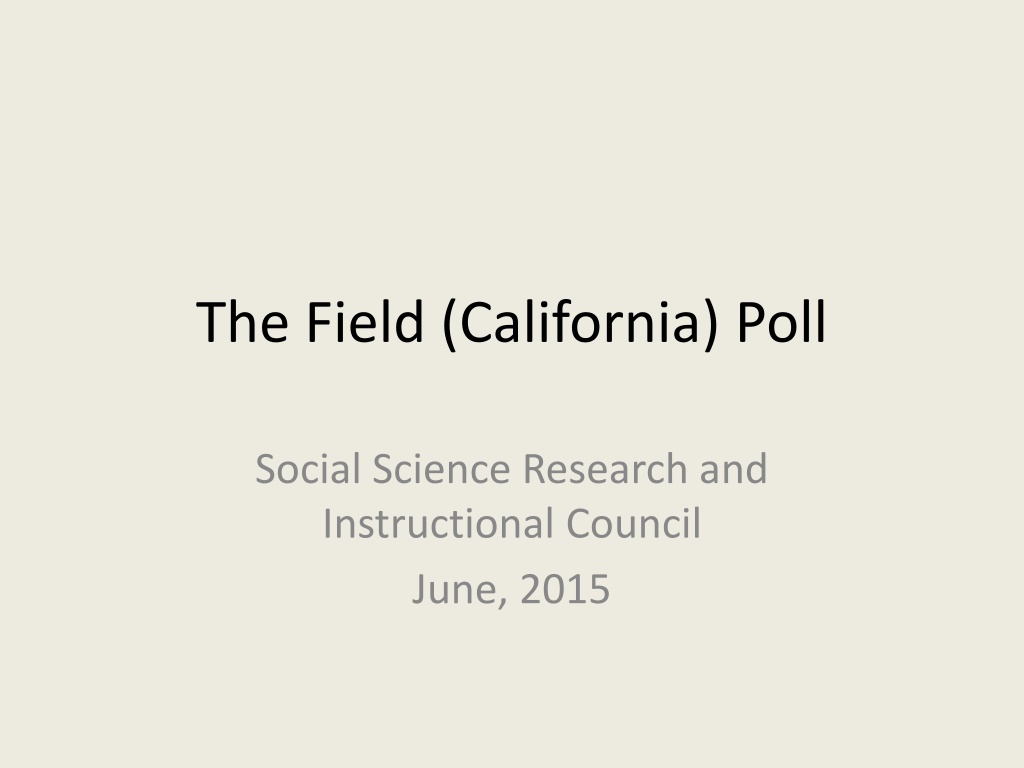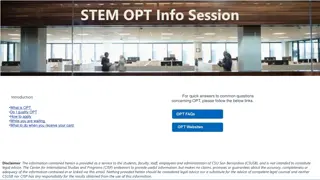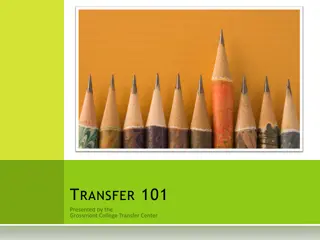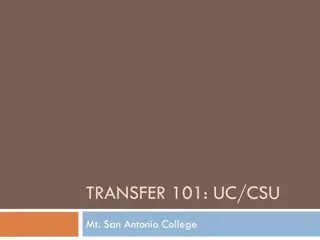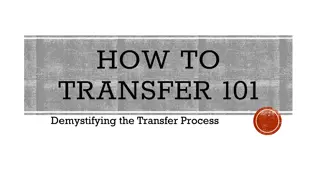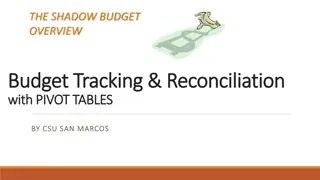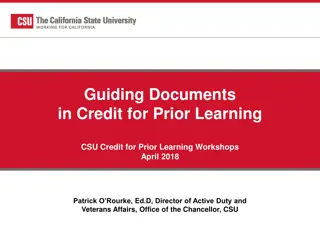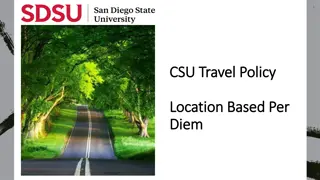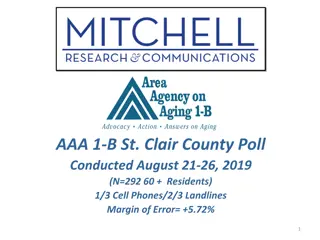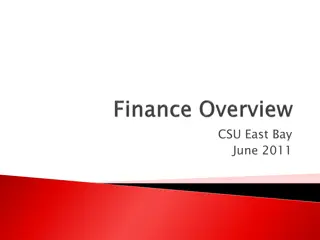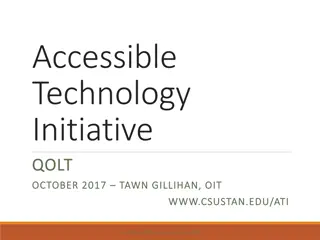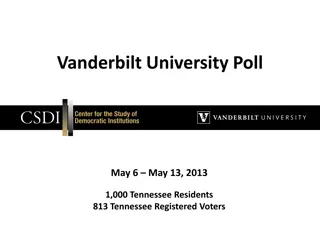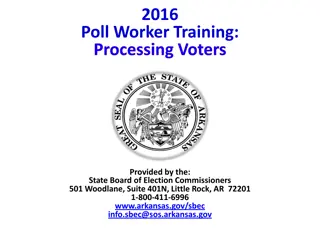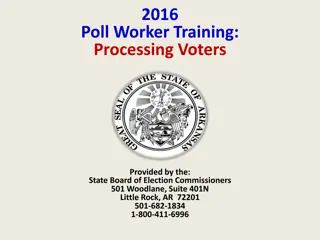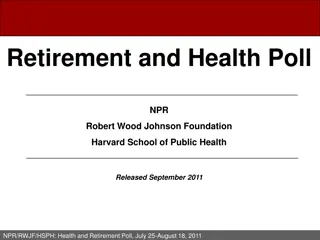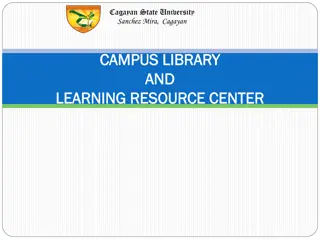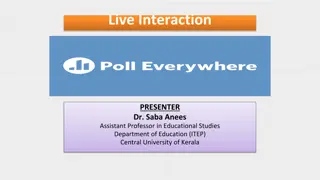Understanding The Field Poll and Accessing Data Through CSU Campuses
The Field Poll, established in 1947 by Mervin Field, is an independent survey of California public opinion. CSU campuses subscribe to social science databases, granting access to Field Poll data. Access is IP authenticated, requiring access from CSU campuses. The UCDATA website allows users to search, download, and analyze Field Poll data from 1956 to the present using various statistical tools.
Download Presentation

Please find below an Image/Link to download the presentation.
The content on the website is provided AS IS for your information and personal use only. It may not be sold, licensed, or shared on other websites without obtaining consent from the author. Download presentation by click this link. If you encounter any issues during the download, it is possible that the publisher has removed the file from their server.
E N D
Presentation Transcript
The Field (California) Poll Social Science Research and Instructional Council June, 2015
Getting More Information about the Screen Captures The images in this PowerPoint are screen captures from various web sites. To see a description of the screen capture, right click on the image and then click on Format Picture. Click on Alt Text and a description of the image will appear. To close the Alt Text box click on Close. 2
What is the Field Poll? The Field Poll was established in 1947 by Mervin Field. An independent non-partisan survey of California public opinion covering a wide range of political and social topics. One of the major statewide public opinion polls in California. Conducted by The Field Research Corporation which is located in San Francisco. The Field Poll typically conducts approximately three to seven polls annually. 3
How do we get access to The Field Poll? CSU campuses subscribe yearly to the social science databases which include: The Field Poll The Roper Center for Public Opinion Research The Inter-university Consortium for Political and Social Research Campuses that subscribe have free access to all these databases for their students, faculty and staff. 4
Browsers We will be using Firefox as our browser for this PowerPoint. If you are using Internet Explorer or Google Chrome, you will need to set your browser to use passive FTP. The default setting in Firefox is to use passive FTP. Instructions for setting Internet Explorer and Google Chrome to use passive FTP are on the SSRIC website. 5
Where are the data stored? The CSU has an arrangement with UCDATA at Berkeley to provide CSU campuses that subscribe to the social science databases access to the Field Polls. Access to the Field Polls on CSU campuses is IP authenticated. This means that in order to access the Field Polls, you will need to do so from your CSU campus. 6
UCDATA Website The UCDATA website allows you to: Search the Field Polls from 1956 through the present. Download the Field Poll data to your computer so you can analyze the data. Field Polls can be downloaded as SPSS files or as raw data files. Analyze the Field Poll data online using a statistical package called Survey Documentation and Analysis (SDA). 7
Availability of Polls Students, faculty and staff at the University of California (UC) and California State University (CSUs) may use all available Field Poll data. The general public and researchers at other academic institutions may also use Field Poll data. However, the Field data are subject to a 2 year embargo period. This means the general public may access the poll data two years after the date of the polls. This PowerPoint is written primarily for CSU students, faculty and staff. 8
Availability continued It generally takes about three months after the completion of the poll for it to be available on the UCDATA site. Remember that Field Poll access is IP authenticated. You must access the data on your campus. It cannot be accessed from off campus. Let s go to the UCDATA site for Field Polls. 9
Searching the Field Polls You can search the Field Polls for variables that deal with your topic of interest, analyze the data online, and download the data sets. Here we re going to search the Field Polls so click on Search. 11
Selecting the Field Polls to Search First you have to select the Field Polls you want to search. Select the decade that you want to search. You can select more than one decade. Here we re going to select the 2010 s so click on that box. 12
Search by Keyword(s) Click on Search Options and Results to enter the keyword(s) for which you want to search. Enter your search term(s) in the box. Let s enter abortion in the box to find all variables with the word abortion anywhere in the variable. Click on Search Techniques Help for tips on searching. Note that you can search for variables that include all keywords or variables that include any search keyword. The default is to search for variables that contain all keywords. Click on Search. 13
Viewing the variables All four variables are from the June/July Field Poll in 2010. This is referred to as Poll 1004. That means it is the fourth survey in 2010. Click on the View button to see the frequency distribution for that variable. Let s look at Q31 which is the variable name. 15
Favor Change in Abortion Laws Field Poll 1004 16
Downloading Data We can download the data from Field Poll 1004 so we can analyze the data further. To do this we have to go back to the download page on the UCDATA website. On your browser (in Firefox) you should see a tab that says UC DATA:DATA. Click on that tab which will take you back to the page we looked at earlier. If you have trouble finding it, click on the link above. Click on Download and you should see the screen on the next slide. 17
Choosing the Files to Download You want to scroll down until you see Field Poll 1004. Click on the folder icon to open it. This is what you should see. 19
Files to Download You ll see a list of files you can download. The files that you will want to download are: Main Quex_Eng.doc is a Word file that contains the questions in the survey. Clicking on the file will open it in Word. 1004.sav is the SPSS file that contains the data which you will have to open in SPSS. The README.txt file is a text file that contains information about the survey. Clicking on the file will open it. In Firefox you can click on each of these files and save them to your download folder. 20
Downloading The file will now be in the download folder on your hard drive. Go to your download folder and make sure that the file is there. You can move it to whatever folder you want to put it in by clicking on it and dragging it to the appropriate folder. 21
Analyzing your Data Now that you have downloaded Field Poll 1004 you can open SPSS and analyze your data. Another option is to analyze the data online using Survey Documentation and Analysis (SDA). SDA is an online statistical package written at UC Berkeley. You can use SDA on any computer where you have internet access and you don t need a site license. It s free. 22
Analyzing your Data Using SDA Let s do some simple statistical analysis of Field Poll 1004 using the UCDATA website. Go back to the UCDATA home page. When conducting your analysis, it is important to always apply sample weights when running your tabulations. The survey data will not be representative if the sample weights are not applied. Scroll down the page and you will see what is on the next slide. 23
Using SDA to Analyze your Data Click on Analyze to open SDA. 24
Choosing the Field Poll You Want to Analyze Using SDA Scroll down the page until you find Field Poll 1004 and click on it. This should open SDA and you ll see what s on the next slide. 25
SDA 26
Choosing the Variable for Which You Want a Frequency Distribution In the left-hand margin you will see a list of variable categories. One of these categories is Hot Button Issues which includes abortion. Click on the + sign and it will expand the list and show the variables. One of those variables is Q31. Enter the variable name, Q31, in the Row box. 27
Getting a Frequency Distribution in SDA This is what you will see. Click on Run the table at the bottom of the screen. Note that the weight variable (WT1) has been applied. 28
Frequency Distribution You ll see the frequency distribution for Q31. Always make sure that a weight has been selected. The survey data will not be representative if the sample weights are not applied. 29
Using SDA to Get a Crosstab Now let s run a crosstabulation of Q31 by Q113 (gender) which will show us how men and women responded to Q31. Go back to the SDA page that shows the variables in the left-hand margin. You will see Demographics. Click on the + sign and it will expand the list so you will see all the demographic variables in the poll. 30
List of Variables in the Demographics Category This is what you will see. Note that sex is V113. 31
Getting a Crosstab Enter Q113 into the Column box. Click on Run the Table and you will see what is on the next slide. Click on Output Options and note that column percents and color coding are selected. Column percents is the default. Click on Chart Options and note that stacked bar chart is selected. 32
Field Poll Data on the UCDATA Website In this PowerPoint we have demonstrated how to use the UCDATA website to do the following: Search the Field Polls. Download the Field Poll data to your computer so you can analyze the data. Field Polls can be downloaded as SPSS files or as raw data files. Analyze the Field Poll data online using a statistical package called Survey Documentation and Analysis (SDA). 34
Field Research Corporation To learn more about The Field Poll and Field Research Corporation, go to their website. Their home page is on the next slide. At the bottom of the page, there is a link to the Field Poll Archives. Click on the link and you will see the archive of past Field poll reports. 35
Field Poll Archives Clicking on Field Poll Archives at the bottom of the Field home page will give a list of Field reports. Click on a report to read it. 37
Field Poll Methodology It's important to keep in mind that The Field Poll changed its sampling methodology twice in its history, once in 1979 and a second time in 2006. Surveys conducted prior to 1979 were conducted among a random sample of California adults using a door-to-door cluster sampling design. Between 1979 and 2005, all Field Poll surveys were conducted by telephone among a random sample of California adults using a random digit dial sampling methodology, Surveys conducted since 2006 have been conducted using a random sample of California voters by telephone using a registration-based sampling methodology. For a more detailed description of the survey methods used by the The Field Poll, go to The Field Poll s home page and click on the link toward the bottom of the page to read about the Field Poll Methodology. You ll see what it looks like on the next slide. 38
Social Science Research and Instructional Council (SSRIC) Another way to learn more about the Field Polls is by going to the SSRIC s web site. The home page is on the next slide. Click on Field under Data in the upper left. Explore the SSRIC web site while you are there. There is lots of information about other data archives (e.g., Roper Center and ICPSR) and teaching resources. 40
SSRIC 41
Resources on the SSRIC Here are some of the resources you will find on the SSRIC web site. Some of these resources are available only to faculty and students in the CSU. Under Data on the left you can get information about ICPSR, Field, Roper, the General Social Survey, and instructional data sets. Under Participate there is information about the Field Faculty Fellow, the ICPSR Summer Program, the SSRIC s Social Science Student Symposium, and workshops that the SSRIC will come to your campus and offer. 42
SSRIC Resources Continued Under Teaching Resources there are exercises and data sets that you can use in your classes. There is also an extensive set of links to other sites of methodological and statistical relevance. These resources are typically available to everyone regardless of whether you are part of the CSU or not. Under Council you can look up the SSRIC campus representative on your campus and learn more about the SSRIC Council. 43
